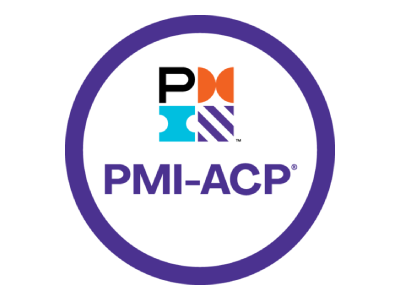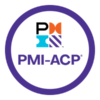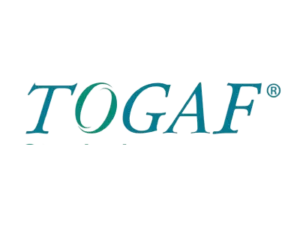| Select Package | Comprehensive Assured Pacakge, Training with Examination, Training with LMS |
|---|
PMI-ACP® (Agile Certified Practitioner)
The PMI Agile Certified Practitioner (PMI-ACP)® course is a thorough educational program created for people who want to become recognized for their expertise in agile methods and cement their knowledge of them. Practitioners can enhance their professional adaptability in project management tools and techniques and prove to employers that they are proficient in agile principles, practices, tools, and techniques by obtaining the PMI-ACP certification.
Overview
Agile approaches, technologies, and techniques are covered in this PMI-ACP course, which also includes real-world scenarios all along. It also covers the ideas found in the recently released Agile Practice Guide, which is a PMI-ACP test reference guide. The 2017 PMI® guidelines are in line with this training program, which will assist you in passing the PMI-ACP test.
What you will learn in PMI-ACP® (Agile Certified Practitioner) course?
- Agile Projects
- Agile Mindset
- Product Quality
- Stakeholder Engagement
- Risk Management
- Continuous Improvement
Who Should Attend PMI-ACP® (Agile Certified Practitioner)
course?
- Software Engineers
- Product Managers
- Project Managers
- Team Leaders
- Business Analysts
- Development Team Members
- Testers
- Aspiring Agilists
Skill covered under the PMI-ACP® (Agile Certified Practitioner) course?
- Agile Principles and Mindset
- Working knowledge of Agile
- Delivering high velocity stories
- Adaptive Planning
- Multiiterative models
- Agile principles
Our Package
0.1 Course Introduction
0.2 Eligibility Requirements
0.3 Certification Fees and Renewal
0.4 About Our Course
1.01 Agile Principles and Mindset – Part One
1.02 Introduction to Agile
1.03 Agile Engineering Practices
1.04 The Agile Manifesto
1.05 Agile Manifesto Explained
1.06 Principles of Agile Manifesto
1.07 Applying the Principles of Agile Manifesto
1.08 Agile Core Principles and Practices
1.09 Benefits of Agile
1.10 Project Life Cycle Characteristics
1.11 Key Takeaways
2.01 Agile Principles and Mindset – Part Two
2.02 Agile Methodologies
2.03 Agile Mindset
2.04 Where to Apply Agile
2.05 Meaning of Scrum
2.06 Features of Scrum
2.07 Three Pillars of Scrum
2.08 Scrum Roles
2.09 Key Terms of Scrum
2.10 Scrum Meetings
2.11 Scrum: An Empirical Process
2.12 Extreme Programming
2.13 Extreme Programming Practices – Part A
2.14 Extreme Programming Practices – Part B
2.15 Roles in Extreme Programming
2.16 Process Diagram of XP
2.17 Crystal Method
2.18 Properties of Crystal Method
2.19 Key Categories of Crystal Method – Part A
2.20 Key Categories of Crystal Method – Part B
2.21 Dynamic Systems Development Method (DSDM)
2.22 Basic Principles of Atern
2.23 Planning Philosophy in DSDM
2.24 DSDM Techniques
2.25 DSDM Phases
2.26 Feature-Driven Development
2.27 Agile Project Management
2.28 Key Takeaways
3.01 Value-Driven Delivery – Part One
3.02 Quantifying Customer Value
3.03 Time Value of Money
3.04 Time Value of Money: Example
3.05 The Financial Feasibility of Projects
3.06 Return on Investment ROI
3.07 Net Present Value (NPV)
3.08 Net Present Value (NPV): Example
3.09 Internal Rate of Return (IRR)
3.10 Payback Period
3.11 Payback Period: Example
3.12 Prioritization of Functional Requirements
3.13 MoSCoW
3.14 Kano Model
3.15 Relative Weighting
3.16 Prioritization of Non-Functional Requirements
3.17 Risk Management in Agile
3.18 Key Takeaways
4.01 Value-Driven Delivery – Part Two
4.02 Minimal Viable Product
4.03 Project Planning Using MVP
4.04 Agile Compliance
4.05 Key Drivers of Agile Compliance
4.06 Incremental Delivery
4.07 Review and Feedback
4.08 Earned Value Management
4.09 Earned Value Metrics
4.10 Earned Value Metrics: Example
4.11 Agile Contracts: Components
4.12 Agile Contracting Methods
4.13 Fixed-Price or Fixed-Scope Contract
4.14 Time and Materials (T and M) Contract
4.15 T and M with Fixed Scope and Cost Ceiling
4.16 T and M with Variable Scope and Cost Ceiling
4.17 Bonus or Penalty Clauses
4.18 Rolling Agile Contracts
4.19 Terms Used in Agile Contracts
4.20 Key Takeaways
5.01 Stakeholder Engagement – Part One
5.02 Stakeholder Management
5.03 Project Charter
5.04 Understanding Stakeholder Needs
5.05 Agile Wireframes
5.06 User Story
5.07 Story Card Information
5.08 Agile Personas
5.09 Theme and Epic
5.10 Agile Story Maps
5.11 Community and Stakeholder Values
5.12 Key Takeaways
6.01 Stakeholder Engagement – Part Two
6.02 Community Management
6.03 Communication and Knowledge Sharing
6.04 Social Media Communication
6.05 Information Radiators
6.06 Burnup and Burndown Charts
6.07 Kanban or Task Board
6.08 Impediment Logs
6.09 Characteristics of Information Radiators
6.10 Agile Modeling
6.11 Active Listening
6.12 Key Elements of Active Listening
6.13 Globalization Diversity and Cultural Sensitivity
6.14 Cultural Diversity Issues: Recommendations
6.15 Agile Facilitation Methods
6.16 Agile Negotiation and Conflict Management
6.17 Five Levels of Conflict
6.18 Key Takeaways
7.01 Team Performance – Part One
7.02 Features and Composition of Agile Teams
7.03 Stages of Agile Team Formation
7.04 High Performance Teams
7.05 Generalizing Specialist
7.06 Team Responsibility
7.07 Self-Organization
7.08 Key Takeaways
8.01 Team Performance – Part Two
8.02 Agile Leadership
8.03 Best Practices of Agile Leadership
8.04 Management vs Leadership
8.05 Servant Leadership
8.06 Coaching and Mentoring
8.07 Agile Coaching
8.08 Agile Emotional Intelligence
8.09 Team Motivation
8.10 Maslow’s Theory
8.11 Frederick Herzberg’s Theory
8.12 McClelland’s Theory
8.13 Boehm’s Theory
8.14 Team Space
8.15 Co-Located Teams
8.16 Distributed Teams
8.17 Co-Located vs. Distributed Teams
8.18 Osmotic Communication
8.19 Team Collaboration and Coordination
8.20 Collaboration Technology
8.21 Communication Gap-Example One
8.22 Communication Gap-Example Two
8.23 Brainstorming Sessions
8.24 Team Velocity
8.25 Velocity-Example One
8.26 Velocity-Example Two
8.27 Sample Velocity Chart
8.28 Agile Tools
8.29 Key Takeaways
9.01 Adaptive Planning – Part One
9.02 Planning Philosophy
9.03 Aligning Agile Projects
9.04 Rolling Wave Planning
9.05 Timeboxing
9.06 Best Practices of Timeboxing
9.07 Advantages of Timeboxing
9.08 Agile Estimation
9.09 Story Points
9.10 Assigning Story Points
9.11 Story Points Estimation
9.12 Story Points Estimation Scale: Example
9.13 Value Points
9.14 Ideal Days
9.15 Story Points vs. Ideal Days
9.16 Wideband Delphi Technique
9.17 Planning Poker
9.18 Planning Poker: Example
9.19 Affinity Estimation
9.20 Key Takeaways
10.1 Adaptive Planning – Part Two
10.2 Project Size Estimation
10.3 Release Plan
10.4 Release Plan: Example
10.5 Iteration Plan
10.6 Types of Iteration Planning
10.7 Iteration Lifecycle: Example
10.8 Release Plan vs. Iteration Plan
10.9 Agile Product Roadmap
10.10 Backlog Refinement – Part Two
10.11 Value-Based Analysis and Decomposition
10.12 Agile Cone of Uncertainty
10.13 Velocity Variations
10.14 Sprint Reviews
10.15 Sprint Retrospectives
10.16 Mid-Course Corrections
10.17 Key Takeaways
11.1 Problem Detection and Resolution – Part One
11.2 Agile Problem Detection
11.3 Problem Detection Techniques
11.4 Fishbone Diagram
11.5 Five Whys Technique
11.6 Control Charts
11.7 Lead Time and Cycle Time
11.8 Kanban
11.9 Kanban Process
11.10 Example of Kanban Board
11.11 Work In Progress
11.12 Managing Constraints
11.13 Little’s Law
11.14 Escaped Defects
11.15 Agile Problem Solving
11.16 Key Takeaways
12.1 Adaptive Planning
12.2 Metrics and Measures
12.3 Benefits of Metrics
12.4 Examples of Metrics
12.5 Baseline Metrics
12.6 Variance and Trend Analysis
12.7 Risk Management Life Cycle
12.8 Step One-Risk Identification
12.9 Step Two-Risk Assessment
12.10 Step Three-Risk Response Strategies
12.11 Step Four-Risk Review
12.12 Risk Log
12.13 Risk Burndown Chart
12.14 Risk Profile Graph
12.15 Spike
12.16 Agile Failure Modes
12.17 Agile Coach Failure Modes
12.18 Troubleshooting Guidelines
12.19 Key Takeaways
13.1 Continuous Improvement – Part One
13.2 Kaizen
13.3 Kaizen in Agile
13.4 Lean
13.5.Defining Waste Manufacturing and Software Development
13.6 A Five Step Process to Becoming Lean
13.7 Value Stream Mapping
13.8 Agile Retrospectives
13.9 Cargo Smells
13.10 Conducting a Retrospective
13.11 Brainstorming Techniques
13.12 Process Analysis Techniques
13.13 Agile Process Tailoring
13.14 Project Factors That Influence Tailoring
13.15 Key Takeaways
14.1 Continuous Improvement – Part Two
14.2 Quality in Agile
14.3 Best Practices for Quality in Agile
14.4 Best Practice One-Verification and Validation
14.5 Best Practice Two-Exploratory Testing
14.6 Best Practice Three-Usability Testing
14.7 Best Practice Four-Test-Driven Development
14.8 Test-Driven Development Advantages
14.9 Acceptance Test-Driven Development Cycle (ATDD)
14.10 Best Practice Five: Continuous Integration
14.11 Best Practice Six: Definition of Done
14.12 Testing Pyramid and Quadrant
14.13 Checklist for Story Completion
14.14 Agile Flowchart
14.15 Agile Spaghetti Diagram
14.16 Organizational Self Assessment
14.17 Key Takeaways
Upcoming Batch
April 20th (Weekends)
FRI & SAT (4 Weeks)
08:30 PM to 01:00 AM (CDT)
April 18th (Weekdays)
MON – FRI (18 Days)
10:00 AM to 12:00 PM (CDT)
PMI-ACP® (Agile Certified Practitioner) FAQs
Organizations that embrace agility and adaptability outperform their counterparts, completing more projects successfully. With the demand for agile practitioners soaring, earning the PMI-ACP certification is more valuable than ever. Developed by agilists for agilists, this certification enhances your agile mindset and skills to deliver value and versatility across diverse industries.
Once you have achieved the PMI-ACP certification, you can further enhance your Agile leadership skills by pursuing the following credentials:
- Disciplined Agile Scrum Master (DASM) Certification
- Disciplined Agile Value Stream Consultant (DAVSC)
- Disciplined Agile Coach (DAC)
The PMI-ACP certification helps you:
- Validate your commitment to continued excellence in project management and Agile
- Demonstrate your ability to manage projects effectively in a complex business world
- Display leadership abilities in times of change
- Champion Agile change in your organization
- Command a higher salary compared to your non-certified peers
This course is best suited for:
- Software Engineers
- Product Managers
- Project Managers
- Team Leaders
- Business Analysts
- Development team members
- Testers
- Aspiring Agilists
As per the latest PMI guidelines, to qualify for the PMI-ACP exam, you must fulfil the following:
PROJECT MANAGEMENT EDUCATION
- 21 hours of training in Agile practices from an authorized training partner
PROJECT MANAGEMENT AND AGILE EXPERIENCE
- 2,000 hours of general project experience working on teams. While a current PMP® or PgMP® satisfies this requirement, neither certification is mandatory to qualify for the PMI-ACP assessment.
- 1,500 hours working on Agile project teams or with Agile methodologies. Please note that this requirement is in addition to the 2,000 hours of general project experience.
You would need to renew your PMI-ACP certification every 3 years. You need to earn 30 PDUs during these 3 years to maintain your certification. You can earn these by learning more Agile topics.








Reviews
There are no reviews yet.